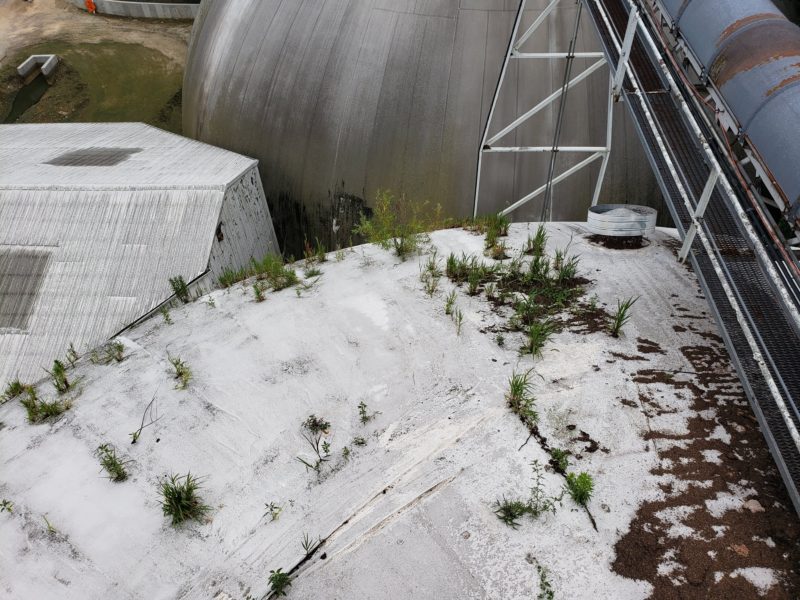Common Problems with Domes
Blistering on Monolithic Domes
It’s usually minimal because of the materials used. Nevertheless, at times blisters will occur. Each time the sun gets hot on that same spot, it increases the size of the blister as the vapors expand.
On Monolithic Domes the simple, easy answer is to poke a hole in the bottom end of the blister. That is the entire remedy for the blister in ninety-nine per cent of the cases.
The urethane foam keeps any gross water out of the dome. So the remedy for a blister on a Monolithic Dome is a very small puncture, such as one made by an ice-pick or a thin knife blade, preferably in the bottom end of the blister.
Small holes through the membrane will not affect the insulation underneath; they simply allow whatever gas is built up in the blister to leave. Blisters should be treated as soon as possible and not allow them to grow. The tension of the fabric pulls the fabric back down to conform to the dome.
This simple operation works extremely well. The blister will rapidly shrink and no longer be a factor.
In some places, sometimes, it’s difficult to reach the blisters. The Airform can be punctured by using a long-handled stick with an ice pick attached. Remember you are making a very small hole. Therefore it will take time for the air to escape and the blister to lay down.
Low Profile Monolithic Construction
One of the reality points is the Monolithic Dome’s profile. Caution must be exercised with the dome’s profile, especially with Monolithic Domes because they are built using an Airform membrane. Inflated forms, by nature, are not absolutely precise. When you inflate a membrane, its shape cannot be perfect.
Theoretical calculations are always based on the assumption that every factor is perfect, when in reality, this is never the case. Tiny mistakes and imperfections can add up to catastrophe.
Error can be introduced in the patterning process by the person doing the math. Little mistakes are extremely difficult to see. Error can also be introduced by the fabric used to make the inflated membrane. The fabric is made in a plant where the people are doing the best they can, but people are also not perfect.
Some fabrics will have stretch problems that have gone unnoticed; some will have other factors. After the membrane is manufactured, it is then attached to a foundation and inflated. Here again, the people making the foundation can make mistakes. These mistakes can be serious and can change the shape of the dome. The contractors in the field that build the Monolithic Dome can also affect the shape of the profile and on large domes, they can drastically affect it.
With the profile shape being affected by the membrane’s fabric properties, the manufacture of the fabric, the inflation method, the foundation and the actual construction, it is too easy to have small variations in the inflated shape that can have a huge impact on the construction of the building.
In dome building using an inflated form, it is extremely important that the spherical shape of the structure be exactly that spherical shape and it also is extremely important for this spherical shape be consistent. For instance, it is possible to change the shape dramatically during construction. The buildings built need to be profiled after they are constructed. We have profiled hundreds of buildings and find that they all have variation. Some of the variations are small, others have large variations. What causes these variations? In most cases it is the actual construction.
You can trust that by hiring Dome Solutions International you will be hiring the best in the industry. We provide the solution to the lack of construction requirements. We have repaired dozens of domes with over 100 years combined experience all over the world.


